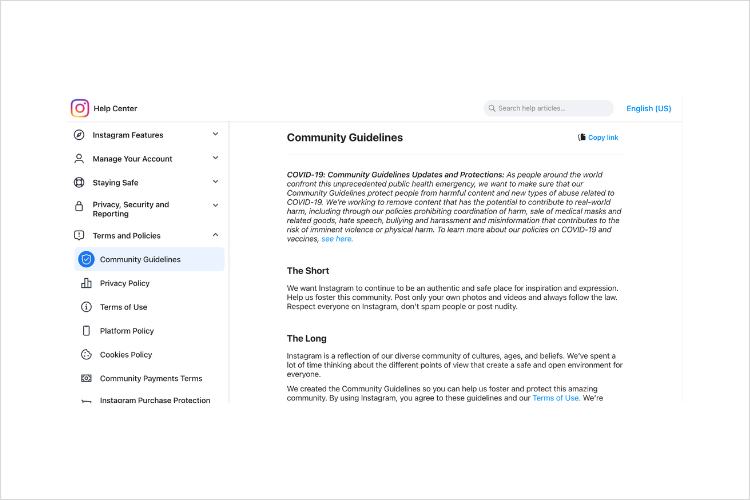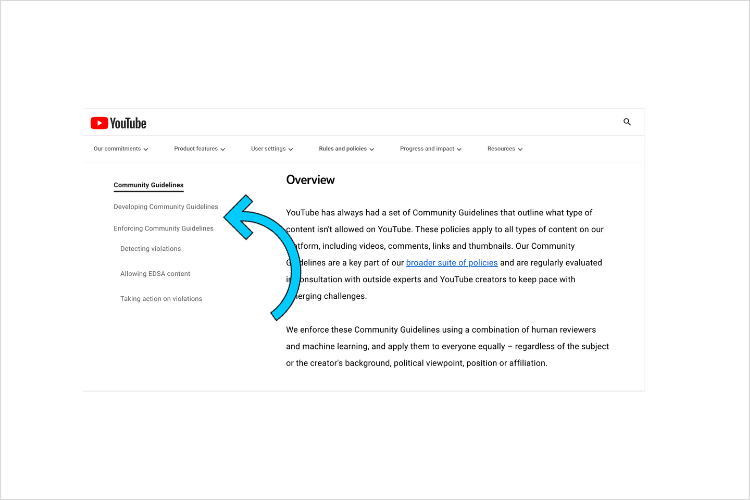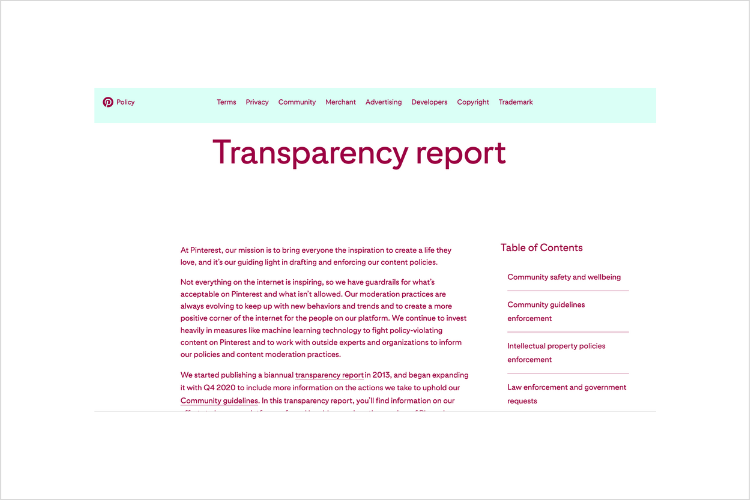When it comes to building a positive and engaging online community, setting guidelines is key.
But drafting community guidelines can be tricky — what topics should you include and how can you ensure everyone abides by them?
We've got you covered. We're sharing what community guidelines are, why they're important, and tips for creating your own.
Plus, download our free community guidelines template — it can be fully customized to fit your brand. 🎉
Table of Contents
What Are Community Guidelines?
Community guidelines, also known as “community code of conducts” or “rules and regulations”, are a set of rules and principles put in place to inform your online community of what’s expected of them.
They’re designed to help foster a positive and inclusive space where members can engage in meaningful discussions, share information, and collaborate respectfully.
So, what should be included in your community guidelines?
It can vary depending on the platform, audience, and type of content.
However, all community guidelines should include:
A purpose and mission statement
A code of conduct, which will cover: rules and restrictions, respectful behavior, prohibited and appropriate content, and acceptable language
What to expect upon violating the rules
Why Are Community Guidelines Important?
First and foremost, community guidelines create a positive and safe environment for all members.
They help set the tone for your online community, by promoting good behavior, preventing harassment, and reducing the risk of inappropriate content.
In fact, setting guidelines shows you care about your community, their experience, and won't tolerate harmful behavior.
In turn, you’ll foster a sense of belonging, trust, and respect amongst your community members — it's a win-win-win!
FYI: Later is trusted by over 7M brands, social media managers, and creators to manage, plan, and analyze their social media content. Create an account today — for free.
4 Things to Consider When Creating Your Community Guidelines
Define Your Community Values and Mission
Conduct Audience Research
Go into Detail
Regularly Review Your Guidelines
#1: Define Your Community Values and Mission
Before creating your community guidelines, it’s important to define your brand's core values and mission so you can weave them into your desired community culture.
Ask yourself, what principles and beliefs are important to you and your brand? Are there any causes or social issues that align with your brand values? How do you want to be perceived by customers, employees, and the public?
Once you determine what’s most important to your brand, you can develop guidelines that represent these core beliefs.
TIP: Include your company’s mission statement or purpose at the beginning. That way, you'll outline what you stand for right from the start!
Get started with Later’s free community guidelines template — download today.
#2: Conduct Audience Research
This may go without saying, but it’s key to create your community guidelines with your community members top of mind.
What kind of topics do they want to discuss? What types of conversations do they want to get involved in? What types of rules resonate with them?
In the early stages of developing your community guidelines, provide opportunities for audience feedback.
For example, you could survey all of your members asking questions to better understand what is important to them. Or, you could draft mock guidelines and share them for direct feedback.
This adds an extra layer of accountability and reduces the chance of misunderstanding between moderators and members.
#3: Go into Detail
Community guidelines are the "ground rules" that dictate how people should interact and behave on your forum.
With that in mind, it's important to make your guidelines detailed, concise, and easy to understand.
In other words, avoid jargon or too much corporate language.
Your guidelines should cover the following areas in detail:
A purpose and mission statement
Code of conduct including:
Language: What types of speech and language are (and are not) acceptable?
Respect: How can members treat each other with respect and show appreciation for different opinions?
Behavior: What type of behavior isn't allowed — such as bullying, trolling, or spamming?
Moderation: What are the consequences of breaking the community guidelines, and how will they be enforced?
#4: Regularly Review Your Guidelines
Lastly, make sure to review your community guidelines on a regular basis.
Over time, new situations may arise and you'll need to tweak your guidelines to avoid controversy or address new issues.
Aim to review your community guidelines annually and/or when business or cultural circumstances change.
Plan, schedule, and publish your posts for Instagram, Facebook, TikTok, LinkedIn, Pinterest, and more with Later's social media management platform. Sign up today — for free.
7 Community Guideline Examples
When creating community guidelines for your brand or business, it’s helpful to get a sense of what other companies have in place.
Here are seven community guidelines from the top social media platforms to get a little inspo from:
Instagram
TikTok
YouTube
Twitter
Facebook
Pinterest
LinkedIn
#1: Instagram's Community Guidelines
Instagram’s community guidelines focus on keeping the platform safe and respectful by prohibiting any form of hate speech, harassment, nudity, and violence.
Instagram splits their community guidelines into two legible sections.
The first is the “short” version which gives an overview, and the second is the “long” version which goes into detail:

See Instagram’s full community guidelines here.
#2: TikTok's Community Guidelines
TikTok’s community guidelines are centered around the safety and well-being of their users.
The platform’s guidelines begin with their mission statement, followed by their approach to content moderation.

TikTok’s guidelines are extremely detailed and in-depth — and are broken up into 11 sections.
See TikTok’s full community guidelines here.
#3: YouTube's Community Guidelines
YouTube’s community guidelines are designed to ensure a safe and respectful environment for everyone using the platform.
In YouTube’s guidelines, not only do they detail their rules and regulations but they also explain how they develop new policies, update existing ones, and enforce their guidelines.

See YouTube’s full community guidelines here.
#4: Twitter's Community Guidelines
Twitter’s community guidelines, or as they call them “Twitter Rules”, are centered around promoting conversations and interactions while keeping the platform respectful.
Twitter starts their guidelines with a brief description of Twitter’s purpose, followed by their safety, privacy, authenticity, and third-party advertising rules.

See Twitter’s full community guidelines here.
#5: Facebook's Community Guidelines
Facebook’s community guidelines encourage users to build positive relationships and contribute meaningfully to the community.
The platform’s guidelines open with a brief introduction about what Facebook is, what they stand for, their commitment to voice, and a detailed list of community standards.

See Facebook’s full community guidelines here.
#6: Pinterest's Community Guidelines
Pinterest’s community guidelines focus on a safe, positive and inclusive environment where people can discover and save creative ideas.

Similar to Facebook, Pinterest follows a basic community guideline structure and they also include more information on how they enforce these guidelines in their biannual transparency report.

See Pinterest’s full community guidelines here.
#7: LinkedIn's Community Guidelines
LinkedIn’s community guidelines promote users to foster a professional, respectful, and inclusive environment that encourages networking, learning, and opportunity.
LinkedIn organizes their guidelines into three pillars, going into more detail as you scroll:

See LinkedIn’s full community guidelines here.
Community guidelines hold the power to keep users accountable for their decisions, foster trust between members, and ensure the safety of your platform’s users.
As you create your community guidelines, remember to keep them simple yet specific, and involve your members to ensure that they are open and understanding of your rules.
With the right set of guidelines, you'll be ready to successfully grow an engaged community in no time!
P.S. Take advantage of Later’s free template. Download it now to start creating your own community guidelines.




